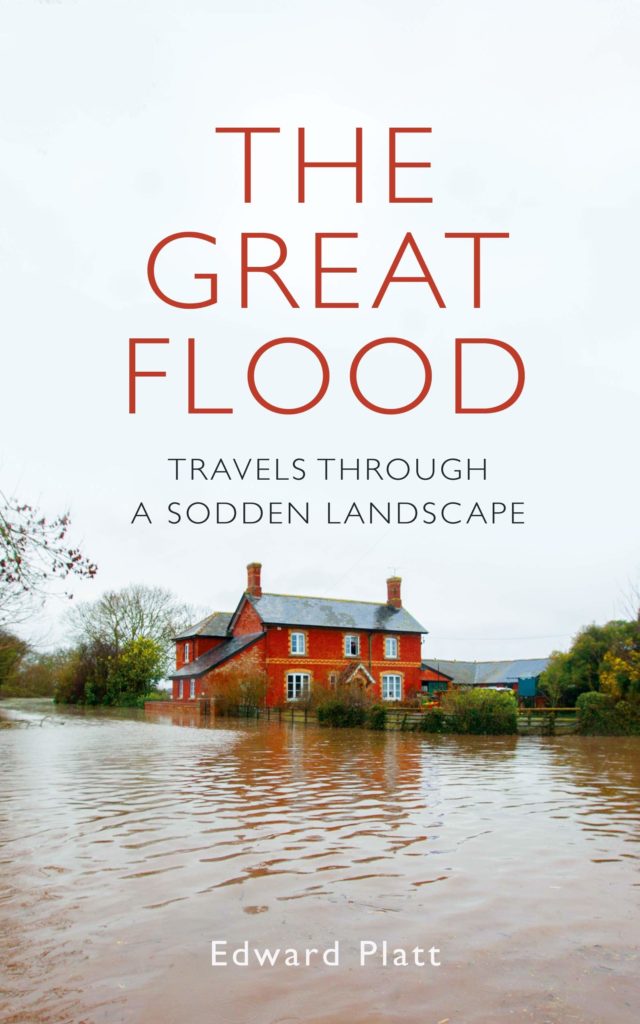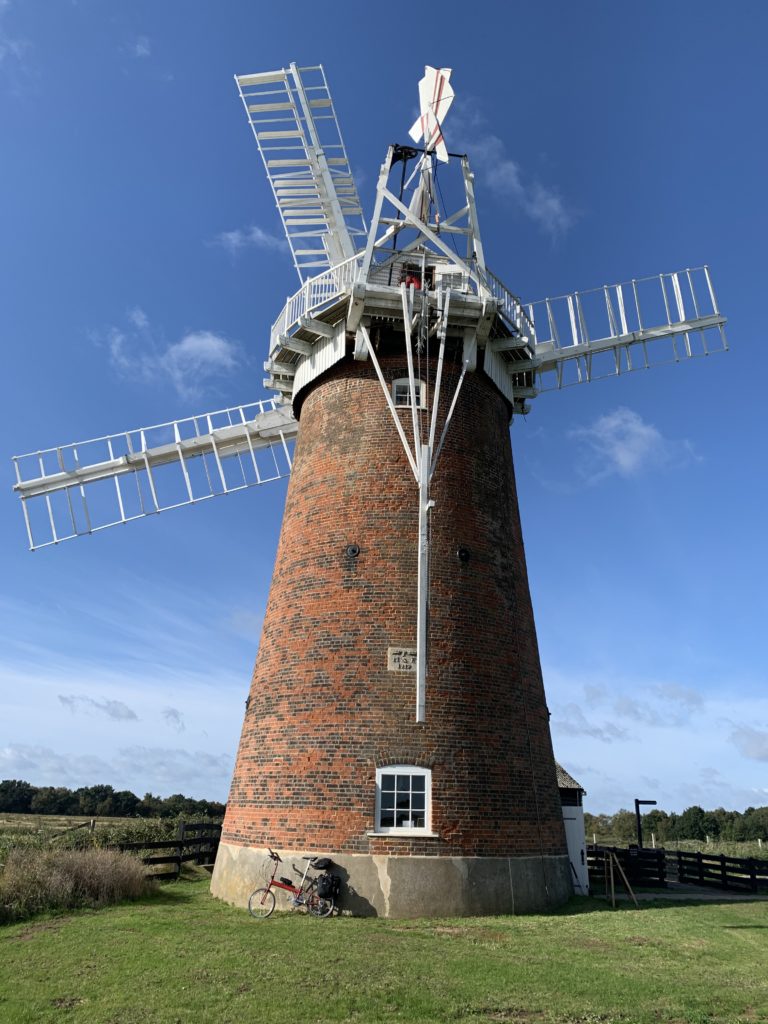In his new book The Great Flood: Travels Through a Sodden Landscape, published by Picador, Edward Platt explores the way floods have shaped the physical landscape of Britain and left their mark on its inhabitants. Ken Worpole reviews.

‘The sea is in, sir’
A couple of weeks ago a friend and I cycled up the east coast from Woodbridge to Cromer over three days, staying overnight in Southwold, Great Yarmouth and Cromer, and then heading back to London by train. The weekend before, the east coast had been battered by high winds, driving rain and flash flooding. As it turned out our luck held and we cycled dry for the whole journey, only needing one lift from a friendly van driver to get us a few hundred yards along a badly flooded road close to the Eastern Broad near Southwold.
Much of the route took us to places now sadly familiar from the names of settlements and landscapes lost to the North Sea in recent times: Eastern Bavents, Covehithe, Horsey, and Happisburgh. Their unhappy fate is detailed in Edward Platt’s new book, The Great Flood: Travels Through A Sodden Landscape, which provides graphic evidence of our worsening environmental plight (though unfortunately without photographs). There is no doubt that the waters are rising, and with ever increasing frequency. As Platt records, in 2014 the Environment Agency estimated that more than 7,000 homes will fall into the sea this century, and the Committee on Climate Change ‘put the potential loss even higher: by the 2080s, 1000,000 properties, 1,600km of road, 650km of railway and 92 railway stations will be at risk.’ That is the world the Extinction Rebellion generation will inherit – or something possibly worse.
Even this is on the basis of projections made from incremental trends. It does not include freak weather events, such as the devastating flood of 31 January 1953, when in a single night, an untimely combination of high winds, high tides and other extreme weather conditions, resulted in more than 300 deaths in East Anglia and more than 1800 deaths along the coast of the Netherlands. Thousands were made homeless, many never to return.
At Horsey, which features prominently in Platt’s watery travelogue, we stopped for tea and cakes at the famous wind-pump, an old windmill that used to drain the marshes, frequently liable to flooding. Even on our short visit in sunny weather, we had to squelch through puddled grass simply to get to the tea-hut from the cycle racks. It was in Horsey in 1937 that a villager, with knowing understatement, came to tell the owner of Horsey Hall that, ‘The sea is in, sir’, just as the surrounding fields and marshlands disappeared beneath the waters. Platt tells many such stories and he tells them well.

Flooding mostly results from excessive rainfall draining off the land into rivers so fast they overflow, eventually combining with street drains backing up under pressure. Less common but usually more damaging is when high tides break through sea defences. In the 1953 floods, both occurred, so that in places such as Jaywick in Essex the water came from the sea and from nearby rivers simultaneously, trapping residents on all sides. 35 people died in one night from drowning or exposure.
The owners of the guest house at Great Yarmouth told us that only three days before, the town and neighbouring Gorleston-on-Sea had been turned into lakes after six hours of heavy rain, street manhole covers having been lifted out of their frames by the power of unstoppable drain-water. The paradox is that those homes most vulnerable to flooding are those their owners – whether private or commercial – chose for their proximity to riverside views or the sea, including the hundreds of chalet parks and caravan sites which line the coast of southern and eastern England.
In the course of his travels Platt visits the unfortunately named Little Venice Caravan Park in Yalding in Kent in 2014 where, he says, the park ‘floods so often the caravans are classified as houseboats.’ Even so, recent floods had been so fierce that many of the caravans had been turned over, usually wrecking them in the process. In Morpeth the author spoke to flooded-out residents who admitted to having opposed proposals to raise the height of the sea-wall, claiming that they had bought their homes for the view. Yet even after suffering terrible damage and loss, some still feel ambivalent about the enlarging sea defences.
What puzzles Platt – and the reader – is the fatalism many feel about the increasing likelihood of even worse flooding resulting from climate change. He is surprised to find that, as in Morpeth, many house-holders elsewhere who have suffered severe flood damage continue to remain sceptical about global warming. Citing J.G.Ballard’s dystopian novel, The Drowned World, Platt finds himself almost sympathetic to the Ballardian belief that ‘the drift to disaster is self-willed’.
The Great Flood: Travels Through A Sodden Landscape is a thoughtful, non-judgemental account of the increasing vulnerability of many parts of Britain to flooding. It comes from a subtle, self-effacing chronicler whose early book, Leadville: A biography of the A40, was an indispensable contribution to London’s uncanny geography. Platt’s kitchen-table and sea-wall interviews with flood victims are particularly disturbing because of the widespread helplessness and fatalism as to whether anything might be resolved in the future. The Great Flood should convince readers to appreciate the trauma that results when people lose their homes and precious possessions overnight. The feelings of victims often begin with emotions of shame and a sense of being personally violated, yet even when there are no fatalities, lives are changed dramatically for the worse, in many cases for ever. The sea is a good friend but a terrible enemy.
*
The Great Flood: Travels Through a Sodden Landscape is out now and available here, priced £16.99.
Ken will be in conversation with Edward Platt about The Great Flood at this year’s Flipside Festival on Saturday, 16 November 2019.